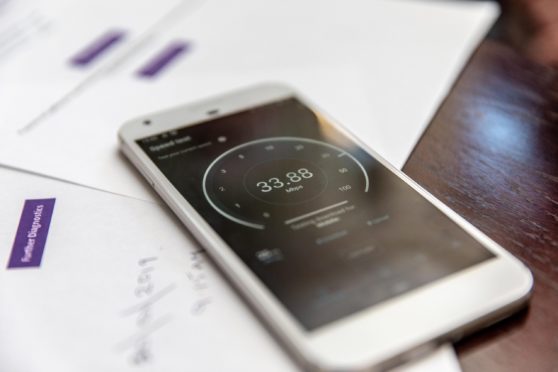Businesses in Dundee and Angus will have to suffer “pedestrian broadband speeds” for longer after a national scheme to improve services was delayed by four years.
The roll out of faster broadband across northern Scotland is likely to take longer than originally thought with Paul Wheelhouse, the Scottish minister for connectivity, telling the rural economy and connectivity committee on Wednesday that the R100 scheme will not be complete until 2026.
The £384 million investment was set up to deliver superfast broadband to 100% of homes by the end of 2021.
A bidding war between BT and Gigaclear, which BT won, was blamed as the cause of the delay.
The country is broken up into north, central and south zones for the project, with anything north of the River Tay generally considered in the former category.
The majority of homes in Dundee already have access to superfast broadband, speeds of 30Mbps or higher, with 99.1% of the city covered.
However, the picture is different in Angus with 89.2% coverage.
The Scottish Government did not elaborate when asked which areas are most likely to see lengthy delays in light of Mr Wheelhouse’s comments.
Alison Henderson, CEO of Dundee & Angus Chamber of Commerce said there are several businesses in the area suffering from “pedestrian broadband speeds” because “infrastructure simply isn’t in place or being upgraded”.
She added: “Unsurprisingly, in the more rural parts of our region it is particularly bad — the further away from the cabinet that your premises is, the worse the speeds become.
“The vast number of people working remotely in the last year has exposed the divisions between those who enjoy reasonable broadband speeds and those who really struggle to maintain simple digital access, such as participating in video meetings with audio and cameras on at the same time.
“As we move forward and people adopt a hybrid model of working, where they are working from home part of their week, we must make sure that everyone has the choice to do so.
“In addition the hybrid working model will mean that we retain more virtual meetings in our working day, and that will likely lead to strains on business broadband speeds and capacity as more people need to access more virtual tools when they return to offices and business premises. Investment in infrastructure remains the biggest challenge that needs addressed to support business’s digital ambitions.
“The rolling back from the targets around R100 is extremely concerning. We need to see increased access to funding support for businesses, not narrowing of any criteria around accessing funding support.”
Connectivity minister Mr Wheelhouse has said at least 86% of premises in the northern lot would have a full-fibre connection once the works have been completed, providing much faster speeds than the original “superfast” service.
He said: “It’s a future-proof solution. As I said at the time we made the announcement, I think it’s the right thing to do.
“I appreciate we take a hit for a programme that takes longer, but it is the right thing to do.”
He added: “Having exceeded our coverage targets through the Digital Scotland Superfast Broadband programme, which has seen superfast coverage in Dundee reach 99.2%, with 96.8% in Fife and a 48% improvement to reach 87.4% in Perth and Kinross, we have intervened to address the remaining market failure by putting in place the R100 programme.
“Scotland has some of the most challenging locations anywhere in Europe for providing telecoms infrastructure.”
